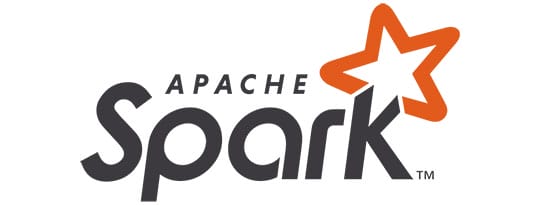Scalable Language, popularly known by the acronym Scala is a general all-purpose language that was developed as an object-oriented and functional programming language. This language enables programmers to be more productive and is particularly useful for those who want to write their programmers in an elegant, type-safe and concise way. When a user writes their code in Scala, they can see the similarity of its style to that of a scripting language.
Scala has gained a lot of recognition since 2016 and is considered one of the essential languages for Big data. Several notable companies use Scala as a programming alternative like LinkedIn, Netflix, Tumblr, Sony, Airbnb, The Guardian, Apple, and Clout. As Scala is a compiler-based language, execution in Scala can be done very fast. Scala’s compiler works in a similar way like Java compiler. First, it gets the source code, then generates Java byte-code which can be executed on any standard JVM.
Developed by Apache Software Foundation, Apache Spark is a technology that speeds up the Hadoop’s computational software process. This high-speed cluster computing technology supports and speeds up various programming languages like Python, Scala, Java, and R. However, data scientists usually prefer to learn Scala and Java for Spark because R is not a general all-purpose programming language and Java is not compatible with Read-Evaluate-Print-Loop. Both Scala and Python are very simple to program in and enable data experts to be productive quickly. Choosing between Scala and Python depends on the kind of application that needs to be developed.
Recommended for you: Introduction to Programming: A Brief of Node JS, Laravel, React, Ruby, Vue & Python.
Why should you learn Scala for Apache Spark?

Developed by the founder of Typesafe, Scala programming language provides the programmers the confidence to develop, design, code & deploy things the right way by making the best use of the capabilities provided by Spark as well as other big data technologies. Scala Programming language, developed by the founder of Typesafe provides the confidence to design, develop, code and deploy things the right way by making the best use of capabilities provided by Spark and other big data technologies.
Apache Spark is written in Scala. Scala is the most frequently used language by Big Data developers who are working on Spark projects because of its scalability on JVM. Most developers report that when they use Scala, they are able to get more into Spark’s source code which enables them to implement as well as access Spark’s newest features. The biggest attraction of using Scala is its interoperability with the programming language, Java which enables Java developers to easily step into the learning path by quickly grasping the concepts of object-oriented.
Let’s take a look into why Scala is the perfect programming language for Apache Spark:
- There is a good balance between performance and productivity when it comes to the programming language, Scala. When compared to other programming languages like C++ or Java, the syntax of Scala is much less intimidating. It’s easy for any new Spark developer to become productive in processing big data using Scala if they are familiar with Lambda and basic syntax collections. Additionally, the performance that can be achieved by using Scala is much better than the one that can be achieved with other conventional data analysis tools such as Python or R. With time, as the developer gains more experience and his skills improve, it will become easier from him to move from imperative to a sophisticated functional programming code in order to enhance performance.
- When a developer is programming with Apache spark, there arises a need to continuously refactor the code. Scala is a statically typed programming language and therefore is much more hassle-free and easier to refactor the code continuously as compared to other languages. Thus, it is ideal to choose Scala as it is a compiled language.
- Enterprises want to reap the benefits of the dynamic programming language without having to compromise on type safety. This can be done by Scala, which is clearly demonstrated by the increasing number of organizations which has adopted Scala through the years.
- Parallelism and Concurrency have been incorporated into Scala design taking into consideration big data applications. The superlative built-in concurrency support and libraries such as Akka in Scala enable developers to build a very scalable application.
- Scala’s functional paradigm makes it collaborate well within the MapReduce big data model. There are innumerable Scala frameworks that follow a similar abstract data kind that is compatible with Scala’s Collections API. If developers familiarize themselves with the regular collections, then it would be easy for them to work with some other libraries.
- It is easy to build scalable big data applications in the path provided by Scala with regard to complexity and data size. This programming language provides a very good support for functional programming with its support for immutable named values and data structures and, for-comprehensions.
- As compared to Java, Scala is less complex. A single complex line of code in this programming language can substitute for 20 to 25 lines of complex code in Java, thus making it a favorite for processing big data on Apache Spark.
- There are many well-designed libraries in Scala that are suitable for linear algebra, random number generation, and scientific computing. The breeze which is the standard scientific library contains special functions such as numerical algebra, non-uniform random generation, and many others. The data library supported by Scala, Saddle provides a solid foundation for manipulation of data through array-backed support, robustness to missing values, automatic data alignment, and 2D data structures.
- Speed and efficiency are critical despite the increasing processor speeds. The efficiency and speed of Scala make it the best option for algorithms that are intense computationally. Memory efficiency and Compute cycle are also well tuned when Scala is used for Spark programming.
- When it comes to API coverage, many programming languages such as Java or Python lags. Scala, however, has been able to bridge this API coverage gap and therefore is attracting traction from the Spark community. One rule that developers should remember is that they can write the most concise code by using Scala or Python and that they can achieve the best runtime performance by using Scala or Java. The best trade-off is to make use of Scala for Spark because all the mainstream features are available which means that developers need not have to be a pro at advanced constructs.
The Pros and Cons of using Scala in Apache Spark:

In brief, the following is the pros and cons of using Scala for Apache Spark.
The Pros:
- It is fast.
- It runs on JVM.
- Unity testing & Strong IDEs.
- A very good serialization format.
- It can reuse the libraries in Java.
- Libraries like AKKA.
- It’s advanced streaming capacity.
The Cons:
- The absence of a good knowledge base.
- Cannot boast widespread usage.
You may also like: 5 Simple Mind Tricks to Help You Learn JavaScript Faster.
Conclusion:

Companies are increasingly realizing that Scala not only gives the conventional agile language a close run but is also useful for elevating products to the next level. In order to keep up with the changing technology needs required for big data processing today, the best is to familiarize oneself with Scala for Apache Spark programming. Scala might be a little complex for beginners to pick up easily, but learning it for Apache Spark is a good investment as it is a perfect blend of functional programming and object-oriented paradigms. A hands-on experience in Scala for projects of Spark is a plus point for developers who want a hassle-free programming experience in Apache Spark.
This article is written by Natasha M. She is a Content Manager at SpringPeople. She has been in the edu-tech industry for 7+ years. With an aim to provide the best bona fide information on tech trends, she is associated with SpringPeople. SpringPeople is a global enterprise training provider for high-end and emerging technologies, methodologies and products. Partnered with parent organizations behind these technologies, SpringPeople delivers authentic and most comprehensive training on related topics. You can follow her on Twitter.





